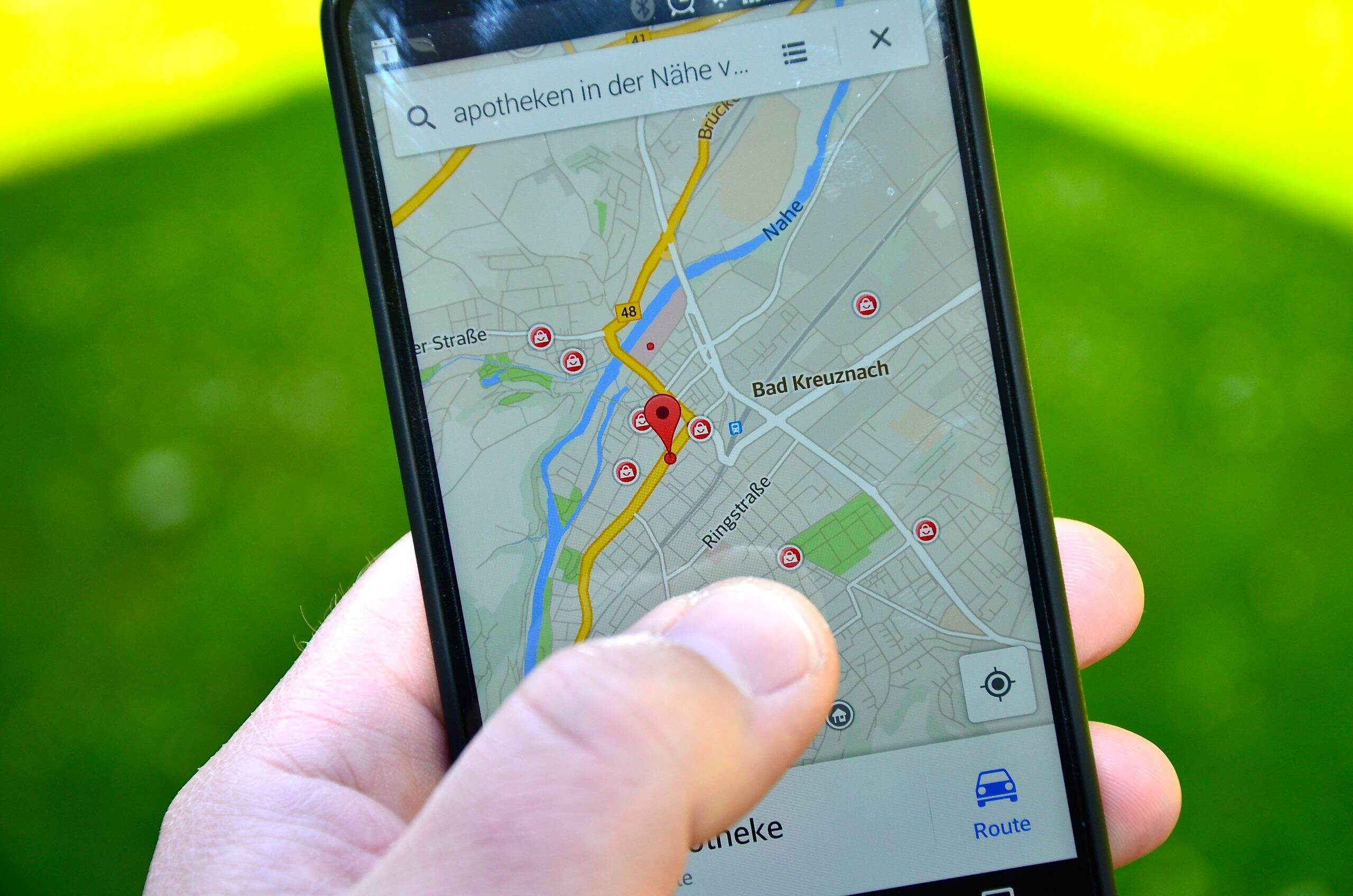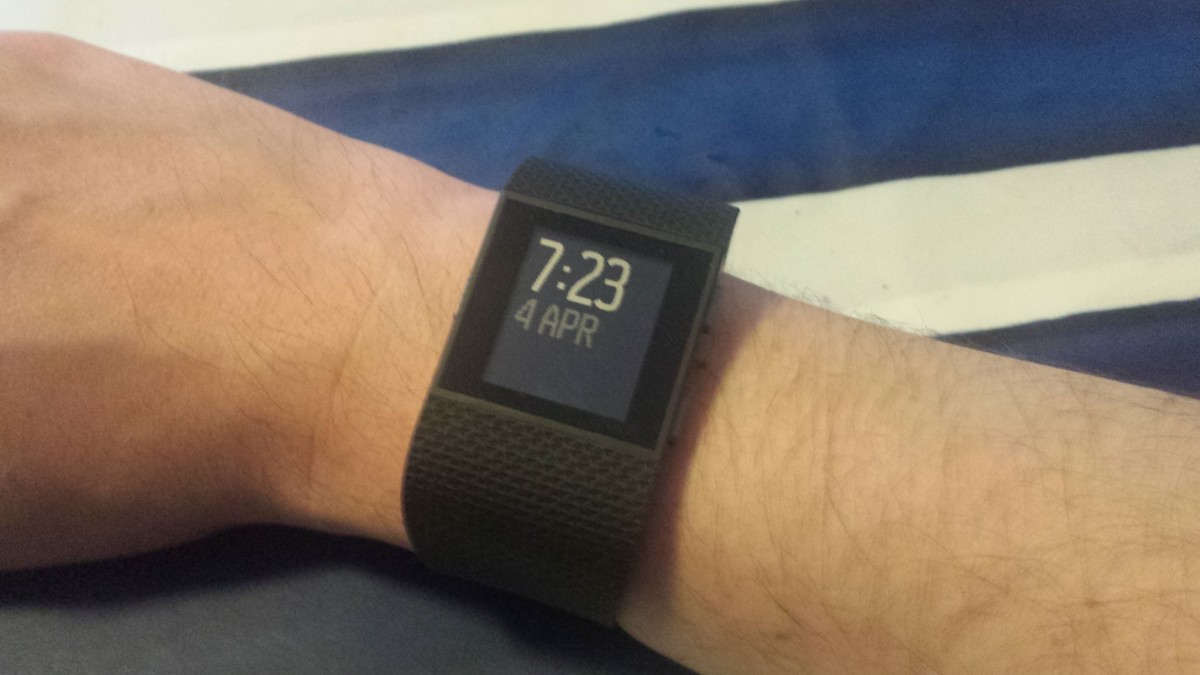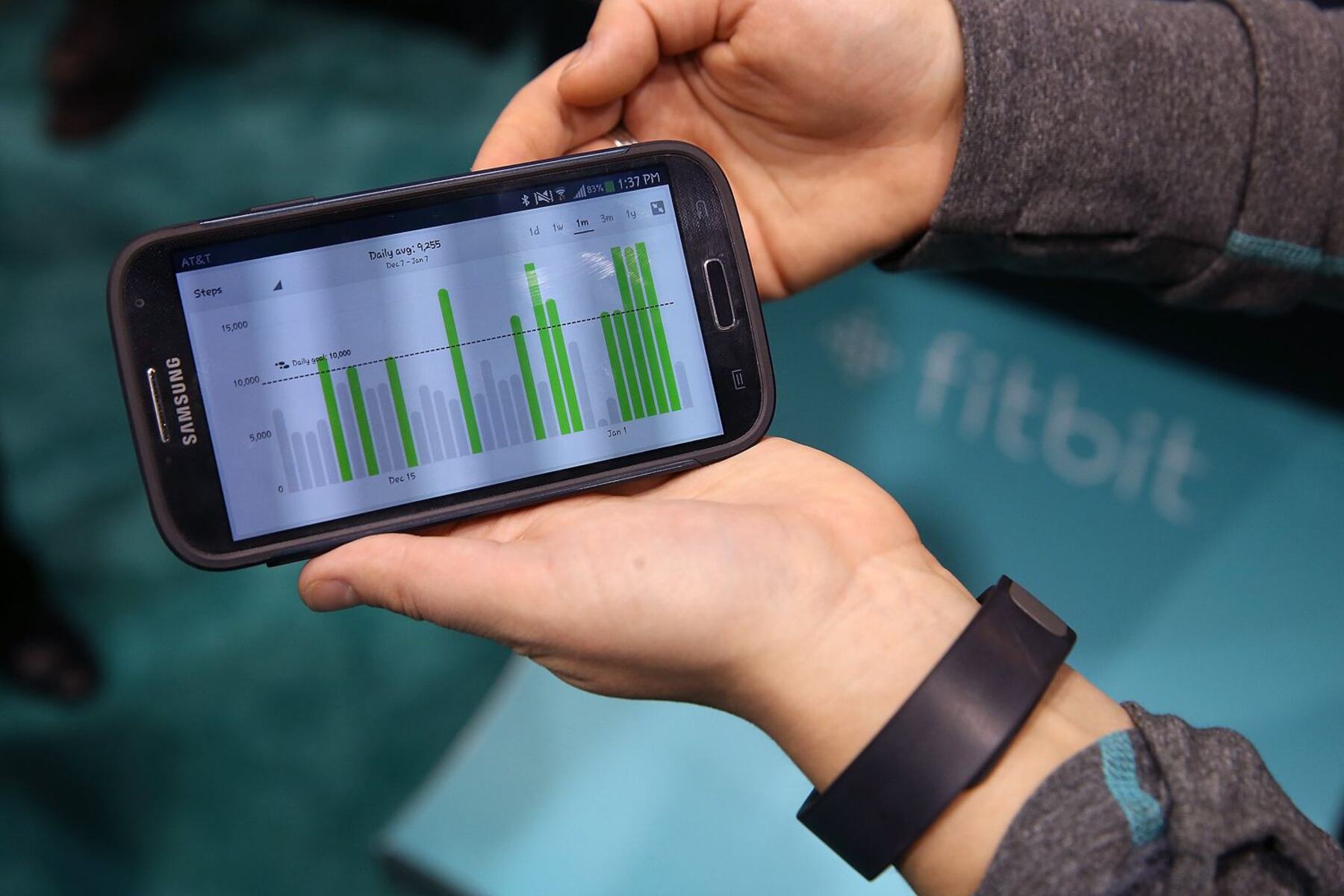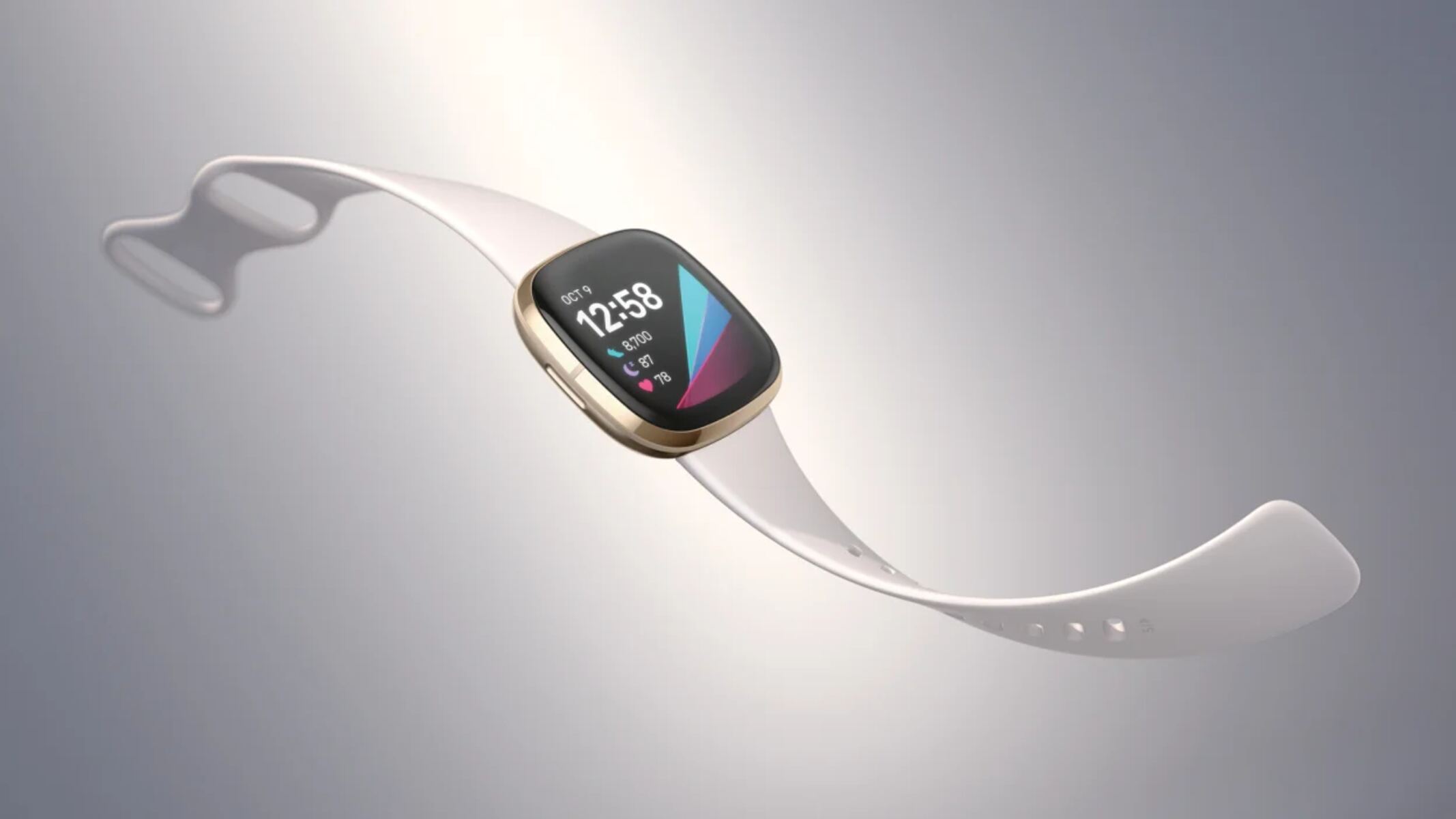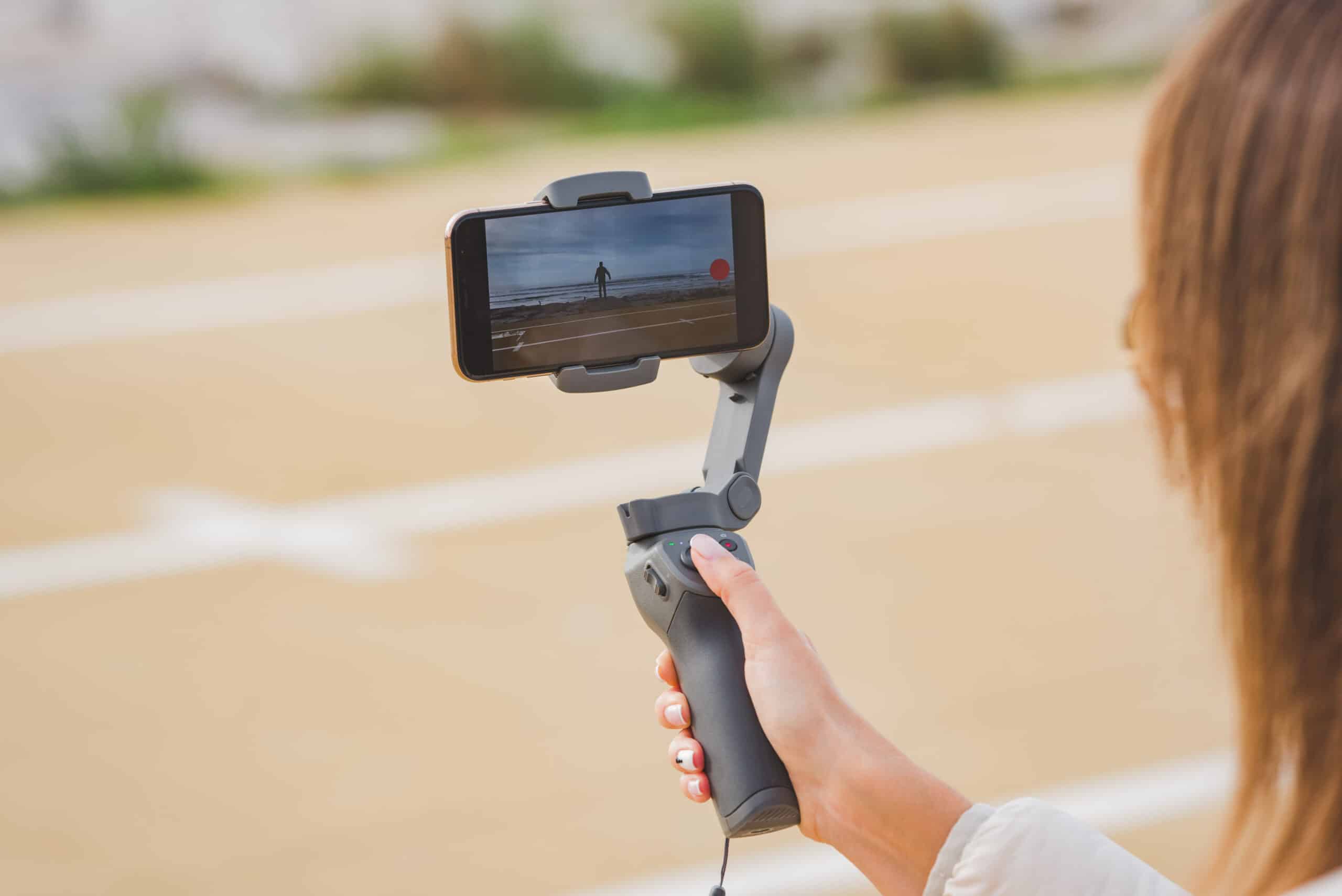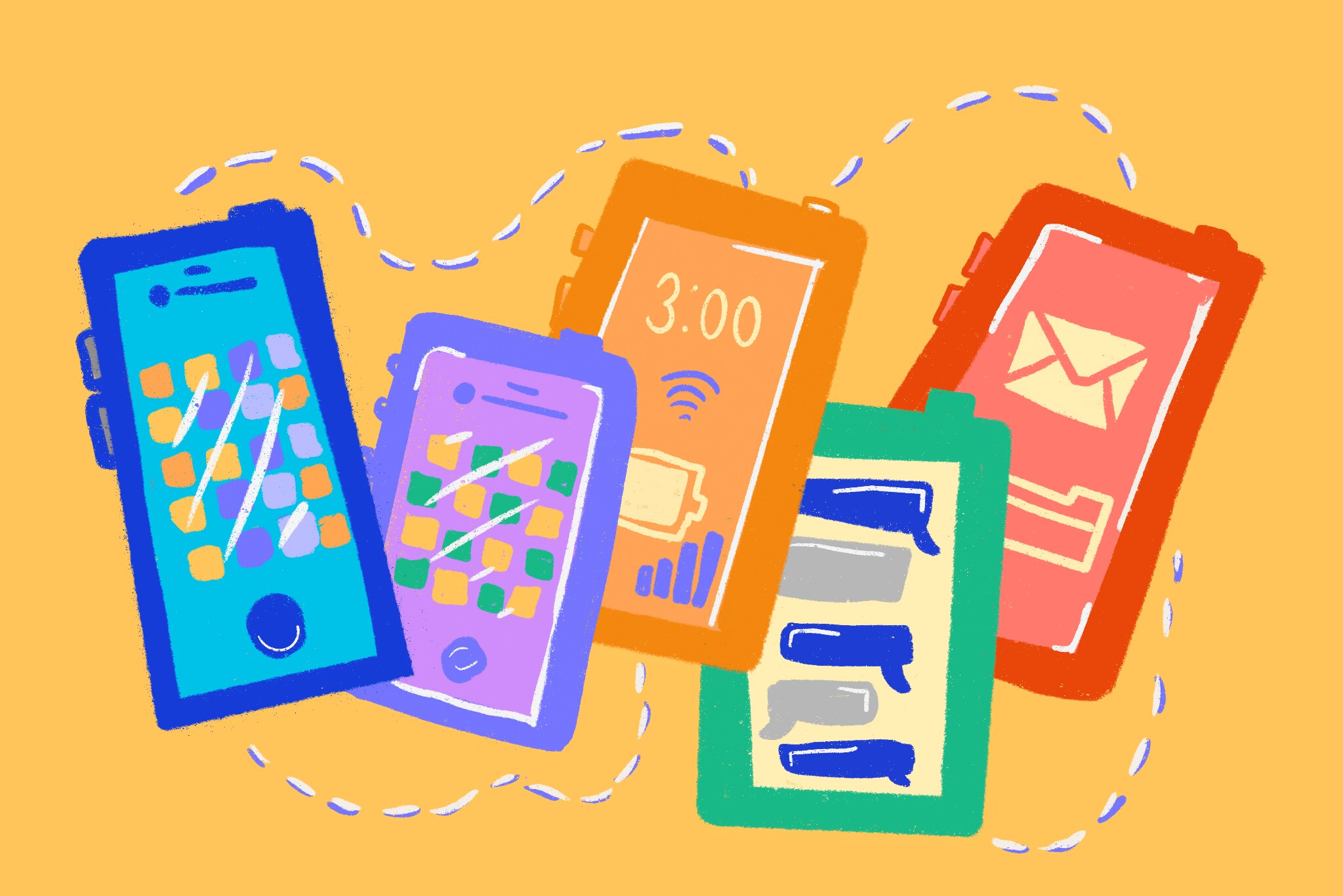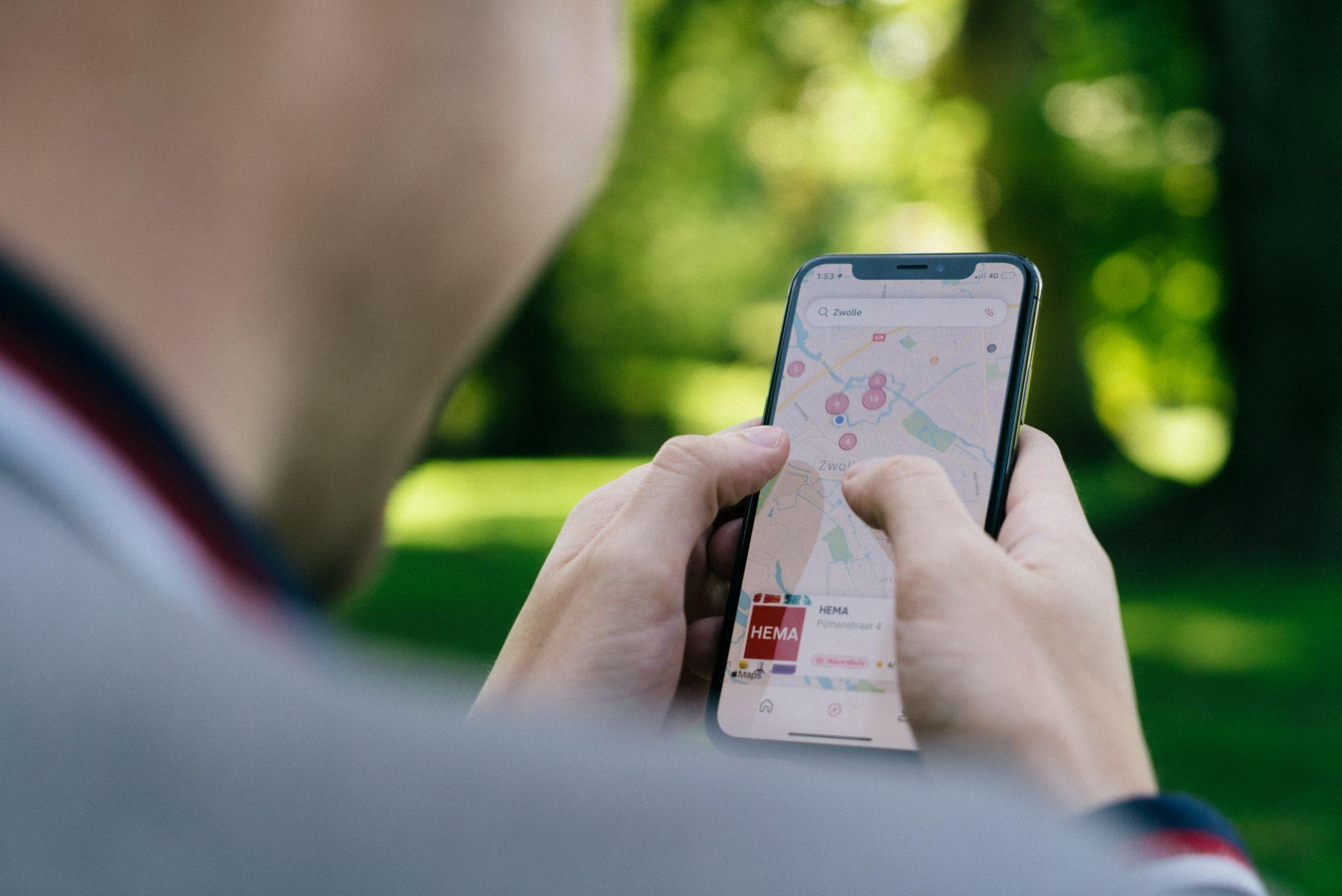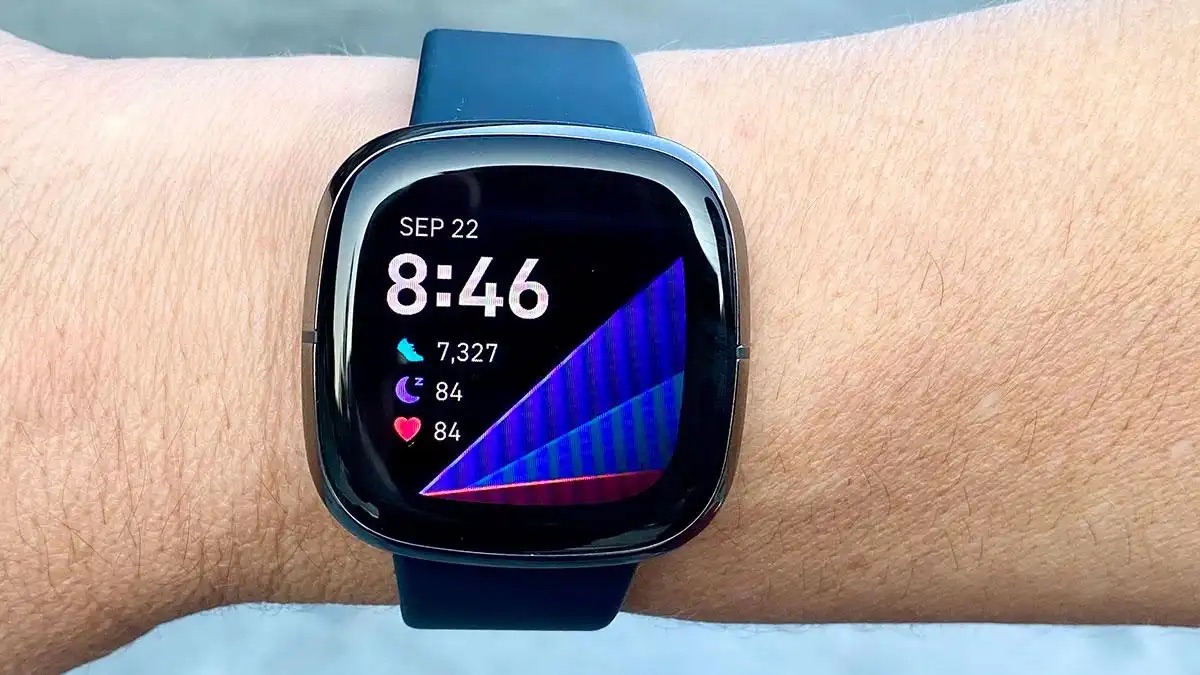Introduction
Welcome to the world where technology has made our lives easier and more connected. Smartphones have become an integral part of our daily lives, providing instant access to communication, information, and entertainment. However, there may be instances where you need to track a smartphone, whether it’s to locate a lost device, keep an eye on your child’s whereabouts, or ensure the safety of a loved one. In this article, we will explore different methods and tools available for tracking a smartphone.
Before delving into the various tracking methods, it’s important to understand the concept of smartphone tracking. In simple terms, smartphone tracking involves the use of technology that allows you to determine the location of a device. This can be done using built-in features provided by the device’s operating system or through third-party applications and services.
There are several reasons why you might want to track a smartphone. For instance, if you’ve misplaced your phone and want to find its exact location, smartphone tracking can come to your rescue. Additionally, parents may want to monitor their child’s location to ensure their safety and well-being. Moreover, tracking a smartphone can be handy in situations where you suspect someone’s involvement in malicious activities and need evidence to support your claims.
Now that we have a clear understanding of smartphone tracking and its purposes, let’s explore the diverse methods available to track a smartphone. Whether you own an Android device or an iPhone, you will find solutions that cater to your specific needs.
Understanding Smartphone Tracking
In order to effectively track a smartphone, it’s important to understand the underlying mechanisms and technologies involved. The most common method used for smartphone tracking is through GPS (Global Positioning System) technology. GPS is a satellite-based navigation system that allows devices to determine their precise location anywhere on Earth.
Modern smartphones are equipped with GPS receivers, enabling them to receive signals from multiple satellites and calculate their exact position. This information is then used by various tracking applications and services to provide real-time location data.
Aside from GPS, other technologies such as Wi-Fi and cellular networks can also be utilized for smartphone tracking. Wi-Fi positioning involves determining the location of a device based on Wi-Fi access points in its vicinity. This method is especially useful in urban areas with dense Wi-Fi coverage.
Cellular network tracking, on the other hand, utilizes the network towers that a device is connected to. By triangulating the signal strength from multiple towers, a rough estimate of the device’s location can be obtained.
It’s worth noting that smartphone tracking is only possible if certain conditions are met. The device must be turned on and connected to a network – whether it’s GPS, Wi-Fi, or cellular data. Additionally, the tracking feature or application must be enabled and authorized to access location information.
It’s important to mention that privacy concerns and legal implications should always be taken into account when tracking a smartphone. While tracking your own device or with the consent of the device owner is generally acceptable, tracking someone else’s device without their knowledge or permission is often considered illegal.
Now that we have a basic understanding of smartphone tracking and the technologies involved, let’s delve into the different methods available for tracking a smartphone.
Different Methods to Track a Smartphone
There are various methods available for tracking a smartphone, depending on the operating system and the tools at your disposal. Let’s explore some of the most commonly used methods:
- Find My Device (Android): For Android users, the built-in ‘Find My Device’ feature is a convenient option. This feature allows you to locate your lost or stolen Android device remotely. You can track the device’s location on a map, play a sound to help locate it, lock the device and display a message, or even erase the data to protect your privacy.
- Find My iPhone (iOS): Apple users can rely on the ‘Find My iPhone’ feature, which is built into iOS devices. With this feature, you can track the location of your lost or stolen iPhone, iPad, Mac, or Apple Watch. You can also remotely lock the device, display a custom message, or erase all the data to prevent unauthorized access.
- GPS Tracking Apps: There are a plethora of GPS tracking apps available on both Android and iOS platforms. These apps provide advanced features for tracking a smartphone, such as real-time location updates, geofencing, and even the ability to track multiple devices simultaneously. Some popular GPS tracking apps include Life360, Find My Friends, and Glympse.
- Mobile Tracking Software: For more comprehensive tracking capabilities, mobile tracking software can be installed on the target device. These software applications provide not only location tracking but also additional features like call monitoring, SMS tracking, and social media monitoring. Some popular mobile tracking software options include FlexiSPY, mSpy, and Mobile Spy.
- Third-Party Websites: There are various websites that offer smartphone tracking services. These services typically require the user to enter the phone number or device IMEI number to track its location. However, it’s important to exercise caution when using these websites, as some may be unreliable or even malicious.
Each tracking method has its own set of features and limitations. It’s important to choose a method that aligns with your specific requirements and preferences. Additionally, keep in mind that some methods, such as third-party websites, may not provide accurate or reliable tracking information.
Now that we have explored the different methods available to track a smartphone, let’s move on to some tips for successful smartphone tracking.
Find My Device (Android)
For Android users, the built-in ‘Find My Device’ feature provides a reliable and convenient method to track a smartphone. This feature is available on devices running Android 4.4 or later versions, and it can be accessed through the Find My Device website or the Find My Device app on another Android device.
When using the Find My Device feature, it’s essential to have enabled it and linked it to your Google account before the device goes missing. To activate this feature, go to your device’s settings, select “Google,” and ensure that the “Find My Device” option is turned on.
Once your device is lost or stolen, you can use another Android device or a computer to track its location. Simply sign in to the Find My Device website or open the Find My Device app on another Android device, and you’ll be presented with the real-time location of your lost device on a map.
In addition to tracking the device’s location, Find My Device offers other useful functionalities. You can play a sound on your device to help you locate it if it’s nearby. If your device is in a hidden spot or you suspect that it has been stolen, you can remotely lock it and display a custom message with contact information. If the situation calls for it, you can also remotely erase all the data on your device to prevent unauthorized access to your personal information.
It’s important to note that in order for Find My Device to work, your lost device must be turned on, connected to the internet, and signed in to your Google account. Additionally, keep in mind that if your device was stolen, it’s always recommended to report the incident to the local authorities and provide them with the location information obtained from Find My Device.
Overall, Find My Device is a powerful tool for Android users to track and secure their misplaced or stolen devices. By utilizing this built-in feature, you can have peace of mind knowing that you have a reliable method to locate and protect your smartphone.
Find My iPhone (iOS)
For iPhone and other iOS device users, the ‘Find My iPhone’ feature is a highly effective method for tracking your lost or stolen device. This feature, integrated into the iOS operating system, allows you to locate and secure your iPhone, iPad, Mac, Apple Watch, or AirPods.
To use Find My iPhone, make sure that you have enabled the feature on your device. You can do this by going to the Settings app, tapping on your Apple ID, then selecting Find My iPhone and turning it on.
When your device goes missing, you can use another iOS device or a computer to access the Find My app or visit the iCloud website. Sign in with your Apple ID, and you’ll be able to view the real-time location of your device on a map.
Find My iPhone offers several helpful functionalities to assist in locating and securing your device. You can play a sound on your device to help locate it if it’s nearby. This is particularly useful if you’ve misplaced your device around the house or in a public place.
If you suspect that your device has been stolen or lost in a public area, you can activate the Lost Mode feature. This option allows you to remotely lock your device, display a custom message with contact information, and track its location over time.
In extreme cases where you have no hope of recovering your device, or you are concerned about the security of your personal data, you can use the Erase iPhone feature. This will remotely wipe all the data on your device to protect your privacy.
It’s worth noting that Find My iPhone works when your device is connected to the internet, whether it’s through Wi-Fi or cellular data. Additionally, it’s crucial to report any lost or stolen devices to the local authorities and provide them with the location information obtained from Find My iPhone.
With its comprehensive tracking and security features, Find My iPhone is an essential tool for iOS device users. By enabling this built-in feature, you can have peace of mind knowing that you have a reliable method to track, lock, and protect your valuable Apple devices.
GPS Tracking Apps
In addition to the built-in tracking features on Android and iOS devices, there are numerous GPS tracking apps available that offer more advanced functionality. These apps utilize the GPS technology in smartphones to provide real-time location tracking and other useful features.
GPS tracking apps are available for both Android and iOS platforms, making them accessible to a wide range of users. Some popular GPS tracking apps include Life360, Find My Friends, and Glympse.
These apps typically require the user to create an account and invite family members or trusted individuals to join their tracking circle. Once the members are connected, their real-time location data becomes visible to the circle members on a map.
In addition to real-time location tracking, GPS tracking apps often offer additional features such as geofencing. Geofencing allows you to set up virtual boundaries on the map, and when a tracked device enters or exits the predefined area, you receive a notification. This feature can be particularly useful for parents wanting to keep an eye on their children’s whereabouts.
Another valuable aspect of GPS tracking apps is the ability to track multiple devices simultaneously. This can be especially handy for families or groups who want to keep track of each other’s locations during outings or trips.
It’s important to note that GPS tracking apps require the tracked device to have a stable internet connection, either through Wi-Fi or mobile data. Additionally, the app needs to be running in the background on the device to continuously update the location data.
While GPS tracking apps offer more features and customization compared to built-in tracking options, it’s essential to consider factors such as privacy and battery usage. Ensure that you review the app’s privacy policy and understand how your location data will be used and protected. It’s also worth noting that continuous GPS tracking can significantly impact battery life, so it’s recommended to use these apps judiciously and be mindful of device battery levels.
With their advanced features and the ability to track multiple devices, GPS tracking apps provide a practical solution for keeping tabs on loved ones or ensuring the safety of your belongings.
Mobile Tracking Software
For those seeking more comprehensive tracking capabilities, mobile tracking software offers a powerful solution. These software applications provide not only location tracking but also additional features such as call monitoring, SMS tracking, and social media monitoring.
Mobile tracking software can be installed on the target device, whether it’s an Android or iOS device, and it operates in stealth mode, making it virtually undetectable. This allows you to remotely monitor the device’s activities and track its location without the user’s knowledge.
Popular mobile tracking software options include FlexiSPY, mSpy, and Mobile Spy. These software applications offer a range of tracking and monitoring features that go beyond just GPS location tracking.
With mobile tracking software, you can track the device’s real-time location on a map, view location history, and set up geofencing alerts. Additionally, you can monitor incoming and outgoing calls, access text messages and emails, and even track social media activity.
This type of tracking software is often utilized by parents who want to monitor their child’s phone usage or by employers who need to keep an eye on company devices issued to their employees.
It’s important to note that the use of mobile tracking software raises ethical and legal considerations. Before using such software, ensure that you familiarize yourself with the laws and regulations regarding privacy and monitoring in your jurisdiction. It’s generally acceptable to use mobile tracking software on devices that you own or have been given permission to monitor.
When selecting mobile tracking software, consider factors such as the features offered, compatibility with the target device’s operating system, and the level of technical support provided. It’s also crucial to choose a reputable and trusted software provider to ensure the security and accuracy of the tracking data.
Mobile tracking software provides a comprehensive solution for tracking and monitoring the activities of a target device. With its advanced features, it offers a range of capabilities beyond basic location tracking, making it a valuable tool for parents, employers, and individuals with specific monitoring needs.
Third-Party Websites
In addition to the built-in tracking features and dedicated apps, there are also various third-party websites that offer smartphone tracking services. These websites allow you to track the location of a smartphone by entering the phone number or device IMEI number.
Third-party tracking websites can be accessed through a web browser on any device with internet connectivity. They provide a simple interface where you enter the required information, and the website retrieves and displays the current location of the tracked device on a map.
While these websites offer convenience and ease of use, it’s important to exercise caution and use them with discretion. Not all third-party tracking websites are reliable or legitimate, and some may not provide accurate or up-to-date location information.
Additionally, privacy and security concerns should be taken into consideration when using third-party tracking websites. Since these websites require you to enter phone numbers or IMEI numbers, you should ensure that the website is reputable and maintains strict privacy standards.
It’s worth mentioning that the accuracy of tracking through third-party websites can vary depending on factors such as the availability of GPS or network signals and the level of cooperation from the device being tracked. Hence, these websites may not always provide precise location information.
Before using a third-party tracking website, it’s advisable to read reviews, check their privacy policy, and ensure that they have a track record of reliable service. Additionally, it’s crucial to use these websites responsibly and legally, respecting the privacy and consent of the individuals involved.
In summary, third-party tracking websites offer a convenient option for tracking a smartphone’s location without requiring additional software or apps. However, it’s important to exercise caution, use reputable websites, and be aware of the privacy and accuracy limitations associated with these services.
Tips for Successful Smartphone Tracking
Tracking a smartphone effectively requires some strategies and best practices to ensure success. Here are some tips to help you maximize the effectiveness of your smartphone tracking efforts:
- Enable Tracking Features: Before you need to track your smartphone, make sure you have enabled and configured the appropriate tracking features on your device. This includes Find My Device for Android or Find My iPhone for iOS devices. Take the time to set up these features correctly and link them to your accounts.
- Keep Devices Updated: Regularly update your smartphone’s operating system and tracking apps to ensure you have the latest features and security patches. Updates often include improvements in tracking capabilities and may enhance the overall performance of the tracking feature.
- Ensure Location Services are Enabled: Check that location services are turned on for your device. This will enable accurate GPS tracking and improve the precision of location data provided by tracking apps or services.
- Maintain a Stable Internet Connection: For real-time tracking, ensure your smartphone has a stable internet connection, either through Wi-Fi or cellular data. A continuous connection is necessary to transmit location updates and receive accurate tracking information.
- Charge your Device: Tracking can drain your device’s battery, especially if it involves continuous GPS usage. Make sure your smartphone is adequately charged before initiating tracking. If possible, consider using a power bank or charging the device while tracking to avoid running out of battery.
- Secure your Account: Protect your device and tracking accounts with strong, unique passwords. Enable two-factor authentication whenever possible to add an extra layer of security and prevent unauthorized access to your tracking data.
- Respect Privacy and Legal Considerations: When tracking someone else’s device, make sure you have their consent and comply with privacy and legal regulations in your jurisdiction. It is always recommended to seek proper authorization before tracking others.
- Report Stolen Devices: If your smartphone is lost or stolen, report the incident to the appropriate authorities. Provide them with any tracking data or location information you have to assist in recovering the device.
- Research and Choose Reliable Tracking Solutions: When considering third-party tracking apps or websites, conduct thorough research to select reliable, reputable options. Read reviews, check privacy policies, and ensure the service has a track record for providing accurate and secure tracking.
- Use Multiple Methods for Redundancy: To increase the chances of successful tracking, consider utilizing multiple tracking methods. Combine built-in tracking features, GPS tracking apps, and third-party websites for redundancy and improved accuracy.
By following these tips, you can enhance the success rate of your smartphone tracking endeavors and ensure a more seamless and efficient tracking experience.
Conclusion
Tracking a smartphone can be incredibly useful for a variety of reasons, from locating a lost device to ensuring the safety of loved ones. In this article, we explored different methods and tools available for smartphone tracking.
We started by understanding the concept of smartphone tracking and the technologies involved, such as GPS, Wi-Fi positioning, and cellular network tracking. We then delved into the different methods available, including built-in features like ‘Find My Device’ for Android and ‘Find My iPhone’ for iOS, GPS tracking apps, mobile tracking software, and third-party websites.
We also provided valuable tips for successful smartphone tracking. Enabling tracking features, keeping devices updated, maintaining a stable internet connection, and respecting privacy and legal considerations are all crucial aspects to consider for a smooth tracking experience.
Ultimately, the choice of which method or tool to use for smartphone tracking depends on your specific needs, preferences, and the devices you own. It’s essential to choose reliable and reputable options and ensure that you are adhering to the legal and ethical considerations surrounding tracking.
Remember, smartphone tracking can be a powerful tool, but it should always be used responsibly, respecting the privacy and consent of individuals involved. Balancing the convenience and utility of tracking with ethical considerations will allow you to make the most of these technologies while maintaining trust and respect in your personal and professional relationships.
With the information provided in this article, you can now make informed decisions and effectively track your smartphone when needed. Stay connected, stay safe, and make the most of the technological advancements that offer us peace of mind in an increasingly connected world.







